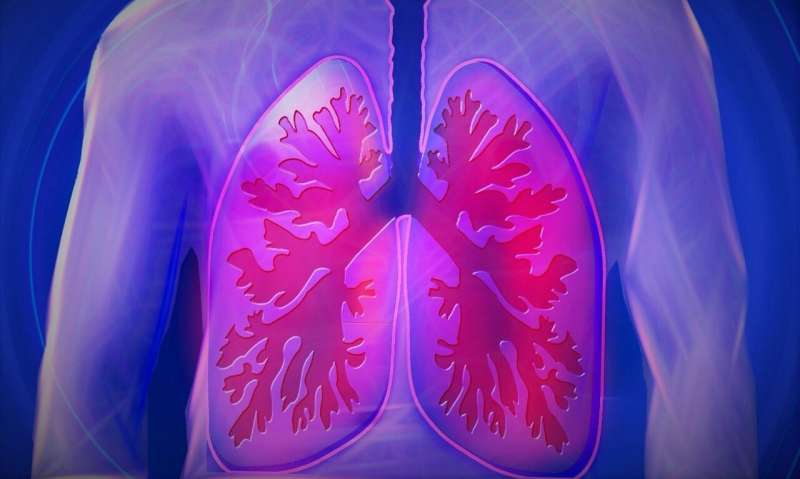Researchers reveal key role of pressure-sensing protein in lung edema

Researchers at the University of Illinois at Chicago describe for the first time the role of a unique, pressure-sensing protein in the development of lung edema—a condition in which chronic high vascular pressure in the lungs causes fluid from the bloodstream to enter the air spaces of the lungs.
The results, which are published in the Proceedings of the National Academy of Sciences, suggest that suppressing the activity of the protein could be a new approach to treating lung edema.
Lung edema can have a variety of causes, including heart failure. Certain types of heart failure—where the heart is chronically unable to pump blood efficiently—can cause increased pressure in the blood vessels in the lungs. The high pressure can result in capillary stress failure, where connections between the individual cells that make up the walls of the capillary blood vessels become looser, allowing fluid from the bloodstream to enter the air spaces in the lungs.
Yulia Komarova, UIC associate professor of pharmacology, and Asrar Malik, Schweppe Family Distinguished Professor and head of pharmacology in the UIC College of Medicine, have been studying adherens junctions—the structures that bind together the cells that make up blood vessels. Adherens junctions act like adjustable nuts and bolts that can be tightened or loosened to modulate the flow of fluids and blood cells into and out of the bloodstream, such as immune cells that travel in the blood to get to areas where they are needed.
Komarova and colleagues wanted to see if a protein called piezo 1—which is found in many cell types, including in the endothelial cells that line the blood vessels, and that can sense mechanical pressure—was involved in triggering adherens junctions to loosen up under conditions of high fluid pressure in the lungs.
The researchers engineered mice where piezo 1 was deleted in the adult animal in the endothelial cells. They then elevated the pressure in blood vessels in the lungs in order to mimic the effects of heart failure. In mice where piezo 1 was deleted in the endothelial cells, minimal fluid was seen entering the lungs, while in mice that had the piezo 1 protein, the lungs filled with fluid as blood pressure increased.
In a separate experiment, Komarova and colleagues used a mouse model where the adherens junctions were artificially reinforced in endothelial cells to keep the connections between individual cells lining the blood vessel cells tight. In these mice, no fluid was seen to enter the lungs when high pressures were induced in the animals even when they had the piezo 1 protein.
"Our experiments suggest that by either blocking the activity of piezo 1 or by bolstering the adherens junctions we can prevent fluid from entering the lungs," Komarova said. "Small drug molecules that achieve these goals could represent novel therapeutic approaches to treat lung edema associated with heart failure."
More information: Endothelial cell Piezo1 mediates pressure-induced lung vascular hyperpermeability via disruption of adherens junctions, PNAS first published June 11, 2019 DOI: 10.1073/pnas.1902165116 , www.pnas.org/content/early/2019/06/10/1902165116




















